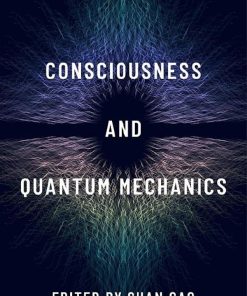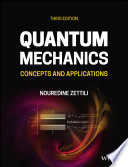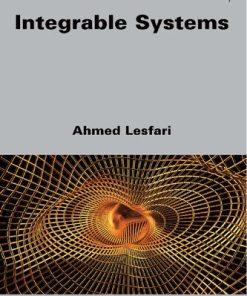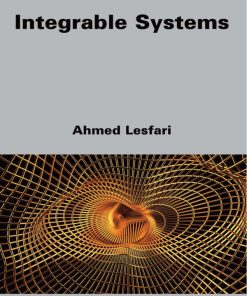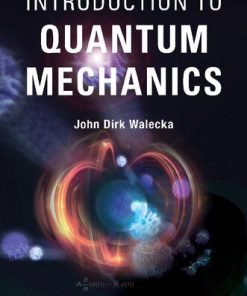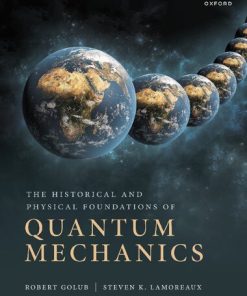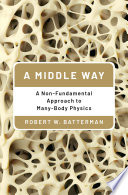Back Of The Envelope Quantum Mechanics with Extensions to Many Body Systems and Integrable Pdes 2nd Edition by Maxim Olshanii 9814508483 9789814508483
$50.00 Original price was: $50.00.$25.00Current price is: $25.00.
Back-Of-The-Envelope Quantum Mechanics: with Extensions to Many-Body Systems and Integrable Pdes 2nd Edition by Maxim Olshanii – Ebook PDF Instant Download/DeliveryISBN: 9814508483, 9789814508483
Full download Back-Of-The-Envelope Quantum Mechanics: with Extensions to Many-Body Systems and Integrable Pdes 2nd Edition after payment.
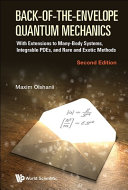
Product details:
ISBN-10 : 9814508483
ISBN-13 : 9789814508483
Author : Maxim Olshanii
Dimensional and order-of-magnitude estimates are practiced by almost everybody but taught almost nowhere. When physics students engage in their first theoretical research project, they soon learn that exactly solvable problems belong only to textbooks, that numerical models are long and resource consuming, and that “something else” is needed to quickly gain insight into the system they are going to study. Qualitative methods are this “something else”, but typically, students have never heard of them before.The aim of this book is to teach the craft of qualitative analysis using a set of problems, some with solutions and some without, in advanced undergraduate and beginning graduate Quantum Mechanics. Examples include a dimensional analysis solution for the spectrum of a quartic oscillator, simple WKB formulas for the matrix elements of a coordinate in a gravitational well, and a three-line-long estimate for the ionization energy of atoms uniformly valid across the whole periodic table. The pièce de résistance in the collection is a series of dimensional analysis questions in Integrable Nonlinear Partial Differential Equations with no dimensions existing a priori. Solved problems include the relationship between the size and the speed of solitons of the Korteweg-de Vries equation and an expression for the oscillation period of a Nonlinear Schrödinger breather as a function of its width.
Back-Of-The-Envelope Quantum Mechanics: with Extensions to Many-Body Systems and Integrable Pdes 2nd Table of contents:
1. Ground State Energy of a Hybrid Harmonic-Quartic Oscillator: A Case Study
1.1 Solved problems
1.1.1 Dimensional analysis and why it fails in this case
1.1.2 Dimensional analysis: the harmonic oscillator alone
1.1.3 Order-of-magnitude estimate: full solution
1.1.4 An afterthought: boundary between regimes from dimensional considerations
1.1.5 A Gaussian variational solution
2. Bohr-Sommerfeld Quantization
2.1 Solved problems
2.1.1 A semi-classical analysis of the spectrum of a harmonic oscillator: the exact solution, an order-of-magnitude estimate, and dimensional analysis
2.1.2 WKB treatment of a “straightened” harmonic oscillator
2.1.3 Ground state energy in power-law potentials
2.1.4 Spectrum of power-law potentials
2.1.5 The number of bound states of a diatomic molecule
2.1.6 Coulomb problem at zero angular momentum
2.1.7 Quantization of angular momentum from WKB
2.1.8 From WKB quantization of 4D angular momentum to quantization of the Coulomb problem
2.2 Problems without provided solutions
2.2.1 Size of a neutral meson in Schwinger’s toy model of quark confinement
2.2.2 Bohr-Sommerfeld quantization for periodic boundary conditions
2.2.3 Ground state energy of multi-dimensional power-law potentials
2.2.4 Ground state energy of a logarithmic potential
2.2.5 Spectrum of a logarithmic potential
2.2.6 1D box as a limit of power-law potentials
2.2.7 Spin-1/2 in the field of a wire
2.2.8 Dimensional analysis of the time-dependent Schrö-dinger equation for a hybrid harmonic-quartic oscillator
2.3 Background
2.3.1 Bohr-Sommerfeld quantization
2.3.2 Multi-dimensional WKB
2.4 Problems linked to the “Background”
2.4.1 Bohr-Sommerfeld quantization for one soft turning point and a hard wall
2.4.2 Bohr-Sommerfeld quantization for two hard walls
3. “Halved” Harmonic Oscillator: A Case Study
3.1 Solved Problems
3.1.1 Dimensional analysis
3.1.2 Order-of-magnitude estimate
3.1.3 Another order-of-magnitude estimate
3.1.4 Straightforward WKB
3.1.5 Exact solution
4. Semi-Classical Matrix Elements of Observables and Perturbation Theory
4.1 Solved problems
4.1.1 Quantum expectation value of x6 in a harmonic oscillator
4.1.2 Expectation value of r2 for a circular Coulomb orbit
4.1.3 WKB approximation for some integrals involving spherical harmonics
4.1.4 Ground state wavefunction of a one-dimensional box
4.1.5 Eigenstates of the harmonic oscillator at the origin: how a factor of two can restore a quantum-classical correspondence
4.1.6 Probability density distribution in a “straightened” harmonic oscillator
4.1.7 Eigenstates of a quartic potential at the origin
4.1.8 Perturbation theory with exact and semi-classical matrix elements for a harmonic oscillator perturbed by a quartic correction or
4.1.9 … or by a cubic correction
4.1.10 Shift of the energy of the first excited state
4.1.11 Impossible potentials
4.1.12 Correction to the frequency of a harmonic oscillator as a perturbation
4.1.13 Outer orbital of sodium atom
4.1.14 Relative contributions of the expectation values of the unperturbed Hamiltonian and the perturbation to the first and the second order perturbation theory correction to energy
4.2 Problems without provided solutions
4.2.1 A perturbation theory estimate
4.2.2 Eigenstates of a two-dimensional harmonic oscillator at the origin
4.2.3 Approximate WKB expressions for matrix elements of observables in a harmonic oscillator
4.2.4 Off-diagonal matrix elements of the spatial coordinate for a particle in a box
4.2.5 Harmonic oscillator perturbed by a δ-potential,
4.2.6 … and by a uniform field
4.2.7 Perturbative expansion of the expectation value of the perturbation itself and the virial theorem
4.2.8 A little theorem
4.3 Background
4.3.1 Matrix elements of operators in the WKB approximation
4.3.2 Perturbation theory: a brief summary
4.3.3 Non-positivity of the second order perturbation theory shift of the ground state energy
5. Variational Problems
5.1 Solved problems
5.1.1 Inserting a wall
5.1.2 Parity of the eigenstates
5.1.3 Simple variational estimate for the ground state energy of a harmonic oscillator
5.1.4 A property of variational estimates
5.1.5 Absence of nodes in the ground state
5.1.6 Absence of degeneracy of the ground state energy level
5.2 Problems without provided solutions
5.2.1 Do stronger potentials always lead to higher ground state energies?
5.2.2 Variational analysis meets perturbation theory
5.2.3 Another variational estimate for the ground state energy of a harmonic oscillator
5.2.4 … and yet another
5.2.5 Gaussian- and wedge- variational ground state energy of a quartic oscillator
5.3 Background
5.3.1 Variational analysis
5.4 Problems linked to the “Background”
5.4.1 Complex vs. real variational spaces
5.4.2 A proof that the (ψ’)2 energy functional does not have minima with discontinuous derivatives
6. Gravitational Well: A Case Study
6.1 Solved problems
6.1.1 Bohr-Sommerfeld quantization
6.1.2 A WKB-based order-of-magnitude estimate for the spectrum
6.1.3 A WKB-based dimensional estimate for the spectrum
6.1.4 A perturbative calculation of the shift of the energy levels under a small change in the coupling constant. The first order
6.1.5 A dimensional estimate for the perturbative correction to the spectrum
6.1.6 A perturbative calculation of the shift of the energy levels under a small change in the coupling constant. The second order
6.1.7 A simple variational treatment of the ground state of a gravitational well
7. Miscellaneous
7.1 Solved problems
7.1.1 A dimensional approach to the question of the number of bound states in δ-potential well
7.1.2 … and in a Pöschl-Teller potential
7.1.3 Existence of lossless eigenstates in the 1/x2-potential
7.1.4 On the absence of the unitary limit in two dimensions
8. The Hellmann-Feynman Theorem
8.1 Solved problems
8.1.1 Lieb-Liniger model
8.1.2 Expectation values of 1/r2 and 1/r in the Coulomb problem, using the Hellmann-Feynman theorem
8.1.3 Expectation value of the trapping energy in the ground state of the Calogero system
8.1.4 Virial theorem from the Hellmann-Feynman theorem
8.2 Problems without provided solutions
8.2.1 Virial theorem for the logarithmic potential and its corollaries
8.3 Background
8.3.1 The Hellmann-Feynman theorem
9. Local Density Approximation Theories
9.1 Solved problems
9.1.1 A Thomas-Fermi estimate for the atom size and total ionization energy
9.1.2 The size of an ion
9.1.3 Time-dependent Thomas-Fermi model for cold bosons
9.2 Problems without provided solutions
9.2.1 The quantum dot
9.2.2 Dimensional analysis of an atom beyond the Thomas-Fermi model
10. Integrable Partial Differential Equations
10.1 Solved problems
10.1.1 Solitons of the Korteweg-de Vries equation
10.1.2 Breathers of the nonlinear Schrödinger equation
10.1.3 Healing length
10.1.4 Dimensional analysis of the projectile problem as a prelude to a discussion on the Kadomtsev-Petviashvili solitons
10.1.5 Kadomtsev-Petviashvili equation
10.2 Problems without provided solutions
10.2.1 Stationary solitons of the nonlinear Schrödinger equation
10.2.2 Solitons of the sine-Gordon equation
People also search for Back-Of-The-Envelope Quantum Mechanics: with Extensions to Many-Body Systems and Integrable Pdes 2nd:
back-of-the-envelope calculation
back-of-the-envelope physics
a quantum theory of the
quantum mechanics and the big bang
a brief history of quantum mechanics (part 2)
Tags: The Envelope, Quantum Mechanics, Extensions, Many Body Systems, Integrable Pdes, Maxim Olshanii
You may also like…
Physics - Quantum Physics
Introduction to Quantum Field Theory with Applications to Quantum Gravity 1st Edition
Physics - Quantum Mechanics
Physics - Quantum Physics
Politics & Philosophy - General & Miscellaneous Philosophy
Mathematics - Dynamical Systems
Mathematics - Applied Mathematics
(EBook PDF) Integrable Systems 1st Edition by Ahmed Lesfari 1119988578 9781119988571 full chapters
Physics - Quantum Mechanics
The Historical and Physical Foundations of Quantum Mechanics
Physics - Theoretical Physics
A Middle Way: A Non-Fundamental Approach to Many-Body Physics Batterman





